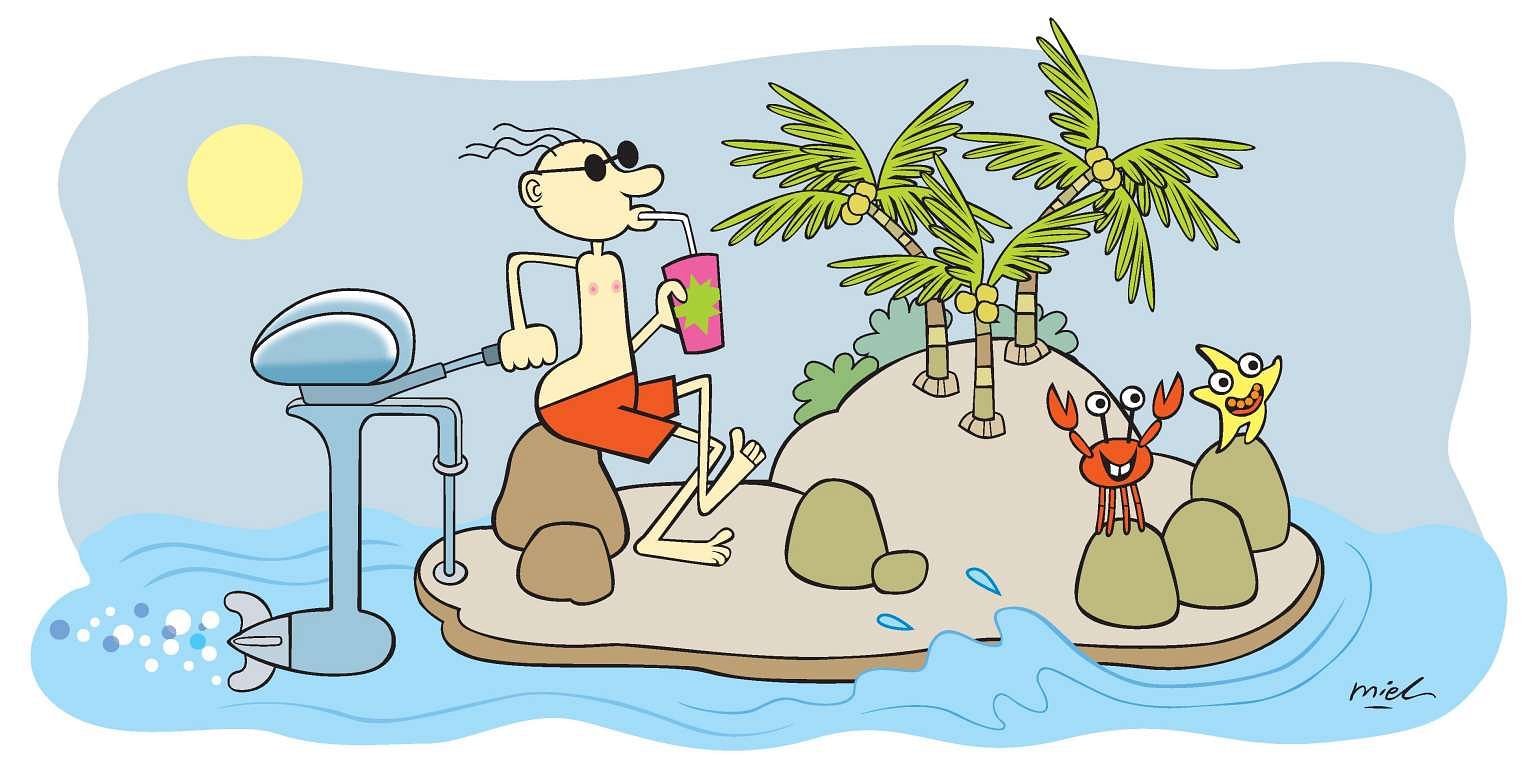Singapore planners are tasked to plan for a population of 6.9 million people. Our leading architects, engineers and philosophers have weighed in with proposals to address our land shortage. Dr Liu Thai Ker advocates better urban planning. Professor Lui Pao Chuen champions the use of the ground beneath our feet. Professor Kishore Mahbubani urges Singaporeans to abandon their cars and the Government to slow the pace of road building. Pioneer architect Tan Cheng Siong has visions of a multi-tier city, which he calls Skyland.
There is another option, which has remained excluded from mainstream town planning. It is that of creating floating space over water. It is hardly surprising that this option has not entered mainstream thinking in urban planning: the application of the science of buoyancy discovered by Archimedes to design foundations for buildings was never part of an architect or an engineer's training. Not many of our engineers are aware that Japan has successfully tested a floating runway 1,000m long and barely 3m deep, and one of the largest Japanese contractors is contemplating a 1,000m-high eco-city for human habitation floating on a platform 3,000m in diameter.
In past articles on this page, I attempted to convince our architects and engineers, including those in government agencies, that very large floating structures (VLFS) provide practical solutions for land-scarce Singapore. In this article, I wish to focus specifically on the East Coast Park (ECP).
ECP covers an area of 185ha and, while it is hugely popular with many of us, it is time to consider if we cannot do justice to this prime piece of land, given its location between the city and the airport and in the vicinity of an upmarket residential area. One may argue that it is sacrosanct, the equivalent of Hyde Park in London or Central Park in New York and bears the hallmark of the foresight of Mr Lee Kuan Yew. True, but in Singapore, no sacred cow is above pragmatism.
With VLFS technology, we can make better use of the land and yet meet the recreational needs of society. We can build a floating park (hereafter referred to as ECP2.0) to replace ECP in the seafront off Bedok.
We can build ECP2.0 incrementally over a period of four to five years. The entire ECP2.0 comprises five or six clusters of VLFS, each about 35ha in area. These floating structures are in turn assembled from smaller modules which are built off-site and towed to their destination and connected, forming as it were instant parks. The surrounding waters will remain clean while ECP2.0 takes shape, quietly and unobtrusively. The mode of construction will require no piling machines, dredgers or earth-moving trucks. The conversion of the original ECP can proceed at its own pace, in tandem with, ahead of or behind the progress at ECP2.0, ensuring at all times that park users have access to the old ECP even as it diminishes in size and to the expanding new ECP2.0 as it grows.

ECP2.0 will have the much-loved beaches, picnic spots and jogging tracks. It need not be flat and monotonous; it will feature undulating landscapes, hillocks for rough terrain biking, and roller-coasting, and cliffs, for zip riding and rock climbing. All these are possible with the aesthetical application of steel, concrete and fibreglass. For instance, a retired oil rig would make a pretty 60m-high escarpment with hanging ferns, wild orchids and water cascading over mock rocks. ECP2.0 will have twice as many kilometres of beachfront because of its insular geography and, therefore, a lot more opportunities for water activities. Floating chalets with a view of the Riau Islands, the city or the airport will complement the waterfront.
The mooring system can be designed to allow the platform to rise and fall with the tide. The platform surface is not diminished at high tide nor do the artificial beaches become mucky at low tide. In the decades ahead, as the sea level rises, the platforms rise with it, unthreatened. On the other hand, the present ECP will require extensive topping up to ward off the impact of a rise in sea level.
Water can be harvested from rain falling on the float and stored beneath deck. The collected water can be used for watering plants and, with a little treatment, can be made potable. Electricity can be generated on a barge with its own fuel tank, which can also double as a wastewater treatment facility. No dirty water will be discharged overboard.
Based on data available online, the Marina Bay floating stadium uses 520kg of steel per sq m of deck space. The floating airport in Japan uses 470kg per sq m. Since the payload per sq m of the VLFS is similar, we may reasonably assume a steel weight of 500kg per sq m of deck surface for ECP2.0. That would put the fabrication cost of the floats at $750 per sq m if it were built of steel; if concrete, the cost could be brought down to within $550 per sq m. All told, with towing, mooring, landscaping and special features, we expect the project would cost $1,200 per sq m. If ECP2.0 were to be equivalent in area to the present ECP, it would cost about $2.2 billion at today's prices. That's a large amount but it would free up land worth 10 times as much. To look at it in another way, ECP2.0 would be paid for in two years if the value of the land ECP occupies generates a return of 5 per cent per year for two years.
What objections can there be to this proposal? Well, the environmentalists will decry the damage to the marine ecosystem beneath the floating islands, and the shipping companies will protest against the loss of a space close to the city to anchor their unemployed ships. The loss of revenue to the nation from tariffs collected from use of the space as an anchorage for idle ships is too insignificant to be a major concern. Ships will have to anchor somewhere else in the west nearer the future Tuas Port or even in Indonesian waters.
The impact on marine life is not as serious as it may appear at first glance. These floats are not deep, drawing 2m of water at most. Tidal flow is hardly impeded and sunlight is only slightly excluded by the floats. They are not monolithic, and openings (moon pools) can and will be made as added features to the park. At the end of the float's life or indeed at any time during its life, it may be moved to a new location where it can either find a second lease of life or harmlessly sink to the bottom of the sea to become new habitats for sea creatures. The life-cycle carbon footprint is always smaller for a floating structure than an equivalent land structure which has to be demolished and its debris carted away at the end of its economic life; old foundations have to be dug up using huge excavators.
Apart from the attractive economics, ECP2.0 is useful to demonstrate how Singapore can create space in the sea without resorting to reclamation. The success of ECP2.0 will encourage our planners, engineers and architects in the private and public sectors to explore other offshoring possibilities.
I urge shipyards to come forward to offer the nation their expertise to design, engineer and deliver this project. It may be embarrassingly simple for those who have delivered jack-ups and semi-submersibles for the past four decades, but it is nevertheless worth doing, given the uncertain future that lies ahead in the oil industry. I also urge the Government to have faith in our shipyards to deliver a world-class national park that floats on water, immune to rising sea levels. With the confidence gained, the Government will be better placed to consider offshoring other assets (commercial, industrial and institutional) as well as invite investors to put new assets within our territorial waters.
- The writer is managing director of Floating Solutions LLP.

